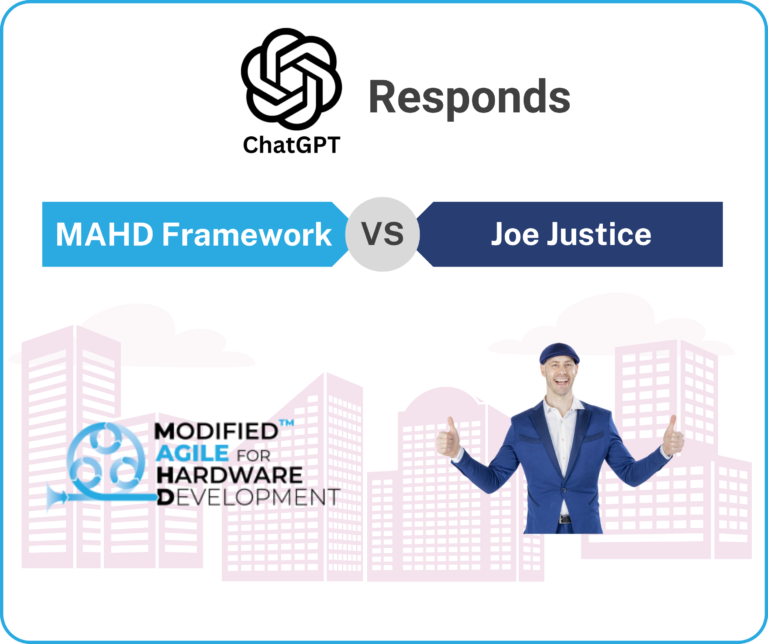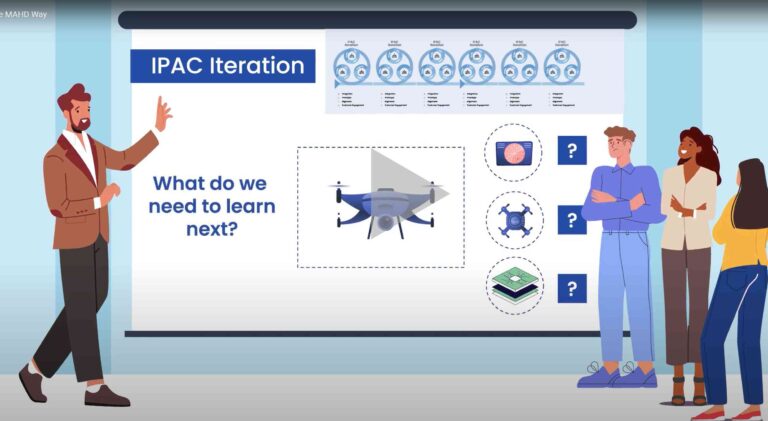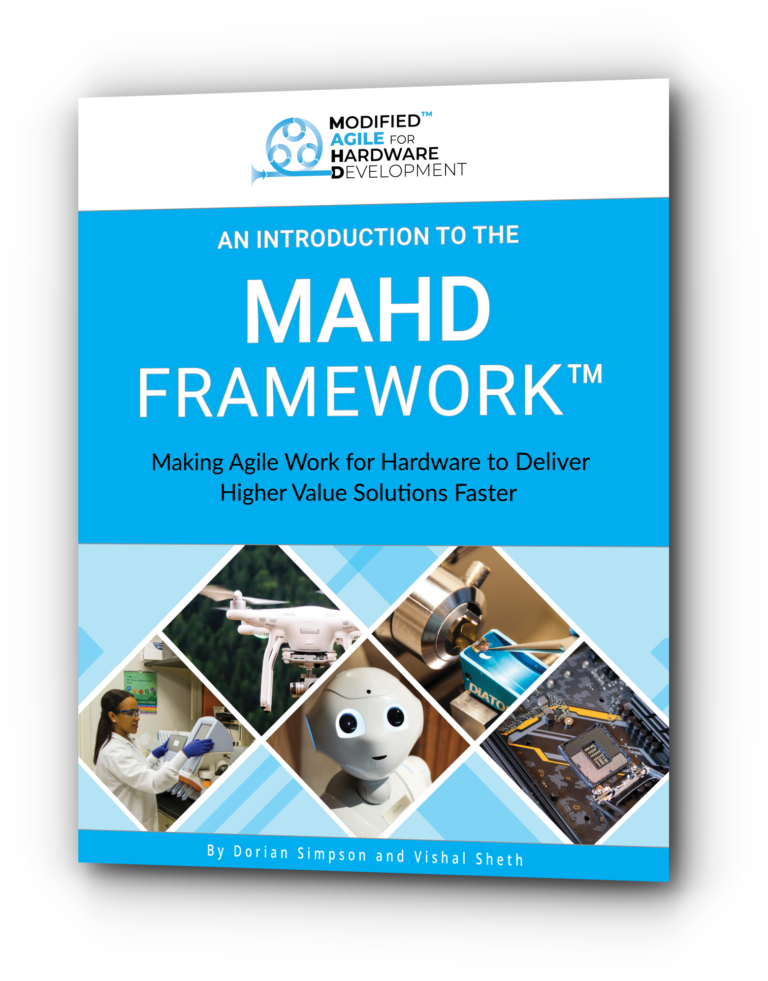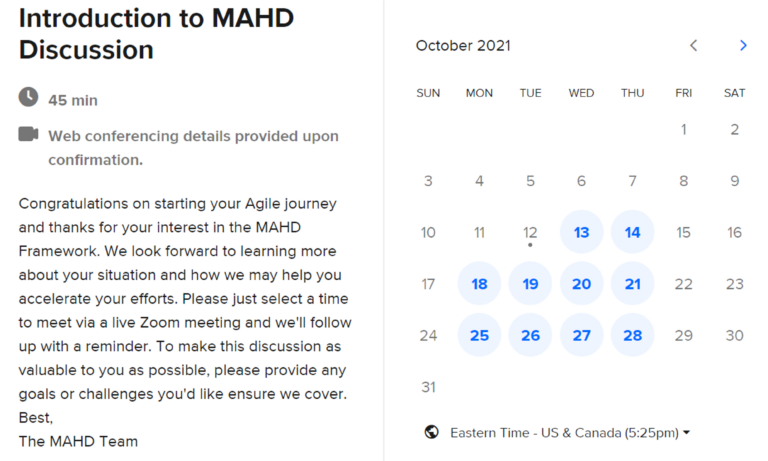Introduction
In dynamic business environments — especially agile product development and go-to-market contexts — clear decision-making roles are crucial. Popular frameworks like RACI (Responsible, Accountable, Consulted, Informed) and RAPID (Recommend, Agree, Perform, Input, Decide) aim to define who does what in decisions. Each has its pros and cons, but both can create confusion in practice. A newer model called AIDE (Assess, Input, Decide, Execute) seeks to simplify this by clarifying decision ownership. This article compares RACI and RAPID to AIDE, highlighting how AIDE clarifies decision ownership in agile product development and commercialization scenarios — from portfolio decisions to marketing initiatives, operational changes, and pricing decisions.
RACI: Responsible, Accountable, Consulted, InformedStructure and Purpose:
RACI is a responsibility assignment matrix that maps out stakeholders’ involvement in tasks and decisions. Each letter designates a role:
- Responsible (R): Does the work
- Accountable (A): Ultimately answerable for the outcome (one person)
- Consulted (C): Gives input (consulted before action)
- Informed (I): Kept informed of updates or outcomes
For example, if deciding on a new product feature, a product manager might be Accountable, a developer Responsible for implementation, a UX designer Consulted for insights, and a marketing lead Informed of the decision.
Strengths: RACI’s strength is clarity: every task has an owner and stakeholders know who to consult or inform. This prevents work from “falling through the cracks.”
Weaknesses: RACI can also be cumbersome. Teams often struggle with “Responsible” vs. “Accountable,” and if multiple people want to be Accountable it leads to confusion. Also, setting up a RACI for every step is time-consuming and too rigid for a fast-changing environment. RACI doesn’t explicitly designate a single decision-maker for an issue — it focuses on who is responsible for tasks and who needs
RAPID: Recommend, Agree, Perform, Input, Decide
Structure and Purpose: RAPID is a framework for clarifying decision-making roles. Each letter represents a key role in a decision process:
- Recommend (R): Researches and proposes a course of action.
- Agree (A): Must approve (holds veto power).
- Perform (P): Carries out the decision (execution).
- Input (I): Provides input to inform the recommendation.
- Decide (D): Final decision-maker.
RAPID is decision-centric. Typically, someone Recommends an action, others provide Input, certain parties must Agree, then one person Decides, and finally designated people Perform or execute the decision. For instance, for a new product feature, a product manager might recommend building it, key engineers and finance managers agree (sign off on feasibility and budget), the product director decides to proceed, and the development team performs by implementing the feature.
Strengths: RAPID explicitly defines who plays what role in a decision, which helps avoid ambiguity about who the decider is or who needs to be consulted. It also ensures major decisions are vetted by the right people and that accountability is clear. By involving those with expertise (Input) and those with authority (Agree) before the Decider acts, RAPID leads to well-informed decisions with buy-in from key stakeholders.
Weaknesses: RAPID can be slow or overly formal if used for every decision. Going through recommend-input-agree-decide for minor issues adds bureaucracy. There can also be overlap or confusion between roles if not clearly defined (e.g. multiple people think they have an “Agree” or “Input” role). In practice, teams must use RAPID selectively; for routine or low-impact decisions, it may be overkill and could hinder the quick, iterative decisions that agile teams favor.
AIDE: Assess, Input, Decide, Execute
Structure and Purpose: AIDE is a streamlined decision-making model designed to simplify decision roles. It stands for:
- Assess/Analyze (A): Evaluate the situation or opportunity, gather information, and frame the decision (like formulating a proposal and recommendation).
- Input (I): Gather input from others — data, expertise, feedback on options.
- Decide (D): One person makes the decision and is accountable for it.
- Execute (E): Implement the decision (carry out the action).
AIDE condenses the process into four clear roles. It merges responsibility and accountability into one Decider (no R vs. A confusion), and eliminates a separate “Agree” role — the Decider alone makes the call after input. It also explicitly designates who executes the decision, ensuring clarity on who takes action.
Strengths: The primary advantage of AIDE is its simplicity. With just four roles, it’s easy to assign and understand. There’s always a single, clear decision owner, which clarifies accountability. Yet it still involves others through the Input role, so decisions are informed by those with relevant knowledge. In an agile team, a Product Owner might assess a proposed feature, get input from the team (effort, value), decide whether to prioritize it, and then the team executes it in the next sprint. This can all happen fast, without a complex matrix or multiple approval layers slowing things down.
Weaknesses: Without a formal “Agree” role, AIDE relies on the Decider to involve the right people. This can be a risk if the Decider overlooks someone important, since there isn’t an automatic approval checkpoint. In high-stakes cases, an organization might still insist on an additional sign-off (which effectively reintroduces another role outside of AIDE’s four). Also, AIDE is a newer concept, so teams might need a brief introduction to the terms. However, in most cases AIDE’s benefits in speed and clarity outweigh these concerns for teams that value quick, accountable decision-making.
Applying the Models to Different Decisions
To illustrate the differences, the table below shows how each framework could assign roles for common decision scenarios like a product strategy choice, a marketing campaign, an operational change, and a pricing decision:
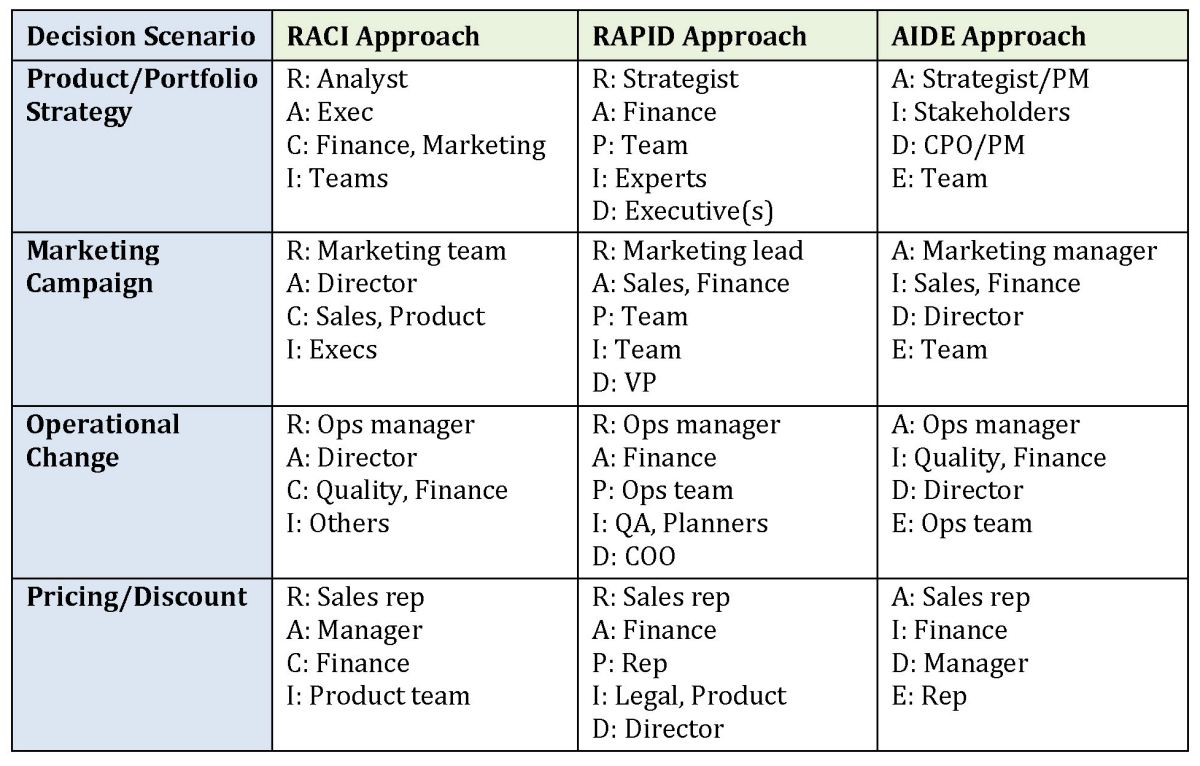
Conclusion
RACI and RAPID are both useful for defining roles, but each has drawbacks. RACI can blur accountability (confusing “Responsible” vs. “Accountable”) and lacks a clear decider, while RAPID clarifies decision roles but can be too slow and heavy for frequent decisions.
While seemingly offering only subtle differences, decision AIDE offers a streamlined, potent alternative. By defining just four roles, it covers the essentials of decision-making with clear boundaries and ownership without the extra overhead. One person is clearly in charge of the decision, others contribute input, and it’s immediately clear who will implement the outcome. This clarity speeds up decision-making while maintaining accountability. In agile organizations, where quick iterative execution and fast, sticky decisions are needed, AIDE keeps people accountable without slowing them down. In summary, while RACI and RAPID still have their place for certain situations, AIDE is emerging as a practical way to clarify and accelerate decision-making in modern, agile organizations.
Works Cited
Bain & Company. “Decision Effectiveness.” https://www.bain.com/insights/decision-effectiveness/
Harvard Business Review. “Who Has the D? How Clear Decision Roles Enhance Organizational Performance.” https://hbr.org/2006/01/who-has-the-d
MAHD Framework. “Decision AIDE Model.” https://mahdframework.com
Project Management Institute. “Responsibility Assignment Matrix (RACI).” https://www.pmi.org/learning/library/responsibility-assignment-matrix-raci-roles-8335


